The wonders of the world have captivated travelers for centuries, showcasing the incredible achievements of human civilization. In this blog post, we will explore the seven wonders of the world that should be on every traveler’s bucket list. These awe-inspiring landmarks offer a glimpse into the rich history, architectural marvels, and natural beauty of our planet.
From the majestic Great Wall of China to the iconic Taj Mahal in India, each wonder holds a unique story and significance. Whether you’re exploring the ancient ruins of Machu Picchu in Peru or marveling at the grandeur of the Colosseum in Rome, these wonders offer a profound sense of wonder and amazement.
Visiting these wonders is not only an opportunity to witness incredible sights but also a chance to immerse yourself in different cultures and histories. The Great Pyramid of Giza in Egypt, for example, stands as a testament to the ingenuity of the ancient Egyptians, while the Christ the Redeemer statue in Brazil is a symbol of faith and unity.
Ultimate Wonders Of The World
Embark on a journey through time and culture as we explore the wonders of the world. From the iconic Great Wall of China to the majestic Colosseum in Italy, these marvels beckon travelers to witness their grandeur and historical significance.
Quick Read: Discover 7 Wonders of the Ancient World
Great Wall of China

The Great Wall of China, a marvel that stretches over 13,000 miles, stands resolute as a living testament to the profound history and ingenuity of ancient China. Spanning diverse landscapes, from rugged mountains to vast deserts, this iconic wonder invites travelers to embark on a journey through time. The wall, built to protect against invasions, now offers breathtaking panoramic views, creating an immersive experience that transcends centuries. As you traverse its length, you are greeted by watchtowers and fortifications, each whispering tales of dynasties and battles.
The Great Wall not only showcases architectural brilliance but also serves as a bridge to China’s rich cultural tapestry, captivating the senses and leaving an indelible mark on those fortunate enough to explore its storied path.
Petra, Jordan
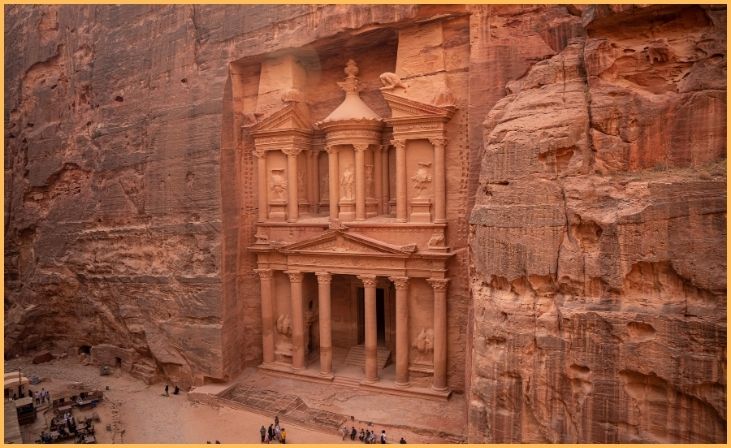
Petra, aptly named the “Rose City,” stands as a UNESCO World Heritage Site, captivating visitors with its enchanting rock-cut architecture. Nestled in the heart of Jordan, this ancient city unveils a mesmerizing tapestry of history and artistry. A journey through its narrow gorge, known as the Siq, serves as a dramatic prelude, heightening the anticipation for the grandeur that awaits.
As you emerge from the Siq, the iconic Treasury, with its intricate facades, unfolds before you, showcasing the architectural mastery of the Nabataeans. Petra’s mystical charm, adorned with tombs, temples, and theaters carved into vibrant rose-red cliffs, transports visitors to a bygone era, making it a cultural treasure trove worthy of exploration.
Machu Picchu, Peru
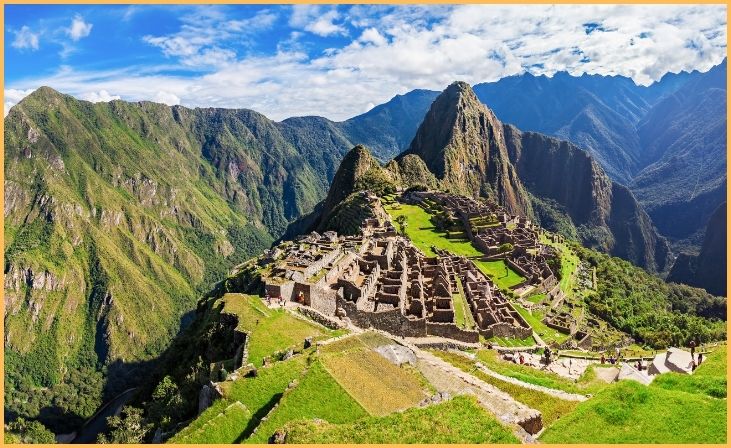
Cradled in the majestic embrace of the Andes Mountains, Machu Picchu stands as a testament to the architectural brilliance of the ancient Incan civilization. This UNESCO World Heritage Site, perched atop a mountain ridge, unveils a mystical aura that captivates every visitor. The journey to Machu Picchu is a pilgrimage through lush landscapes and ascending stone paths, building anticipation for the grand reveal. As the morning mist lifts, the citadel emerges, a mesmerizing blend of precision stonework and panoramic vistas.
Its terraced fields, ceremonial spaces, and enigmatic structures beckon explorers to unravel the secrets of this ancient marvel. Machu Picchu’s ethereal beauty and historical significance make it an unparalleled destination, inviting all who venture there to partake in the magic of this sacred Incan citadel.
Taj Mahal, India
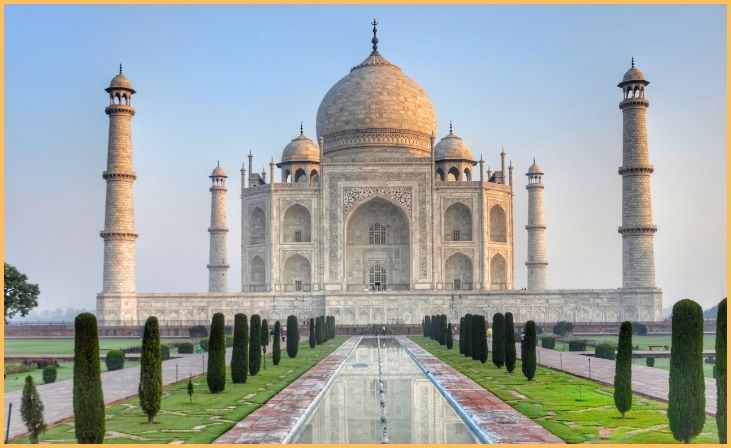
The Taj Mahal, nestled in Agra, India, is an enduring symbol of eternal love and architectural mastery. Commissioned by Emperor Shah Jahan in memory of his beloved wife Mumtaz Mahal, this ivory-white marvel is a UNESCO World Heritage Site that transcends time. Its intricate details, from the delicately carved marble facade to the mesmerizing domes and minarets, showcase unparalleled craftsmanship.
As sunlight bathes the structure, the changing hues of its marble surface create a magical spectacle. The surrounding Mughal gardens, with reflecting pools and floral symmetry, add to the ethereal experience. The Taj Mahal is not just an architectural wonder but a poignant testament to enduring love and a must-visit destination for those seeking a blend of history, romance, and artistic magnificence.
Chichen Itza, Mexico
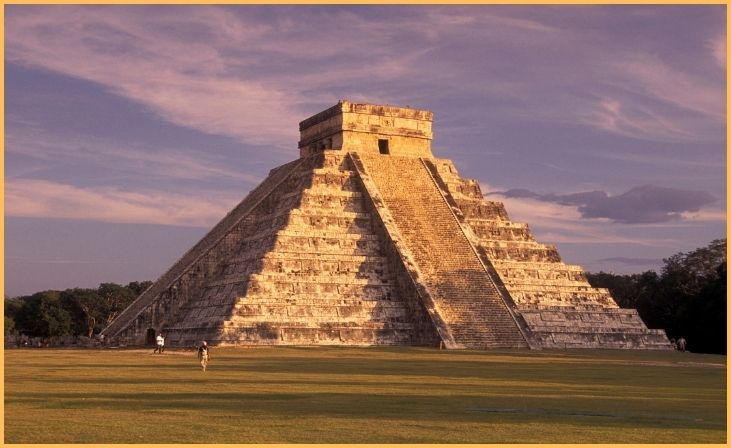
Chichen Itza, a UNESCO World Heritage Site in Mexico, is a breathtaking testament to the grandeur of the ancient Mayan civilization. Dominated by the iconic Kukulkan Pyramid, also known as El Castillo, this archaeological marvel resonates with historical significance. The intricate carvings on its structures and the alignment with celestial events reflect the Mayans’ profound astronomical knowledge.
As you wander through the sacred site, other structures like the Great Ball Court and the Temple of the Warriors unveil the tales of ancient rituals and cultural sophistication. Chichen Itza’s fusion of architectural brilliance and cultural richness provides a window into the marvels of Mesoamerican civilization, making it a compelling destination for those seeking to unravel the mysteries of the past.
Christ the Redeemer, Brazil

Christ the Redeemer, presiding over Rio de Janeiro, Brazil, stands as an iconic symbol of both faith and architectural prowess. This monumental statue, with outstretched arms, watches over the city from the summit of Corcovado Mountain. A beacon of Brazilian Christianity, the statue invites visitors to ascend through lush Tijuca National Park for a spiritual and awe-inspiring experience.
From its vantage point, panoramic views of Rio and its coastline unfold, creating a breathtaking tableau. The harmonious blend of religious symbolism and natural beauty makes Christ the Redeemer a cultural and spiritual landmark, offering not just an encounter with faith but also a connection with the captivating landscapes that surround it.
Read More: Exploring the 10 Natural Wonders of Nebraska
Colosseum, Italy
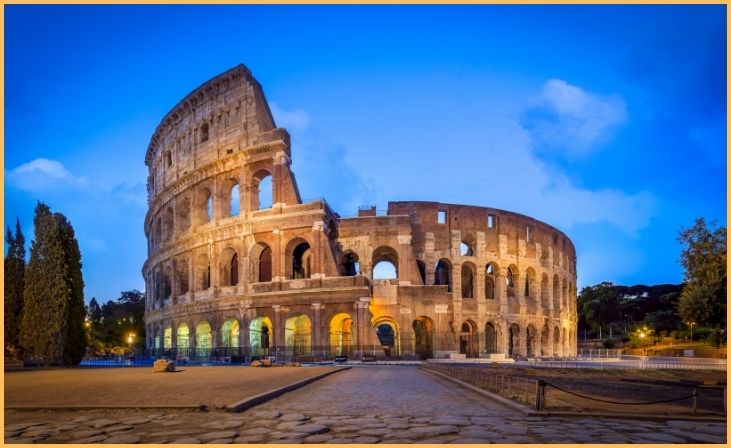
The Colosseum in Rome, an enduring marvel of ancient engineering, beckons visitors to embark on a journey through time. Standing as one of the largest amphitheaters ever built, this iconic structure resonates with the echoes of grand spectacles that once defined ancient Rome. As you step into its colossal arena, imagine the roar of the crowds and the gladiatorial contests that unfolded within its historic walls.
The architectural ingenuity of the Colosseum, with its intricate network of tunnels and seating for thousands, is a testament to the cultural significance of Roman entertainment. Today, the Colosseum stands as a living relic, inviting modern-day explorers to immerse themselves in the rich tapestry of history and envision the grandeur of a bygone era.
Final Words
In conclusion, the seven wonders of the world offer an extraordinary journey through human history and natural beauty. From ancient architectural marvels to breathtaking landscapes, each wonder holds a special place in our collective consciousness.
Visiting these wonders provides a unique opportunity to appreciate the wonders of our planet and to connect with the rich tapestry of human civilization. Each wonder offers a different experience, whether it’s exploring the fascinating history of the Colosseum or marveling at the intricate design of the Taj Mahal.
By adding these wonders to your travel bucket list, you can embark on a journey that will leave you with lasting memories and a deep appreciation for the wonders of our world.
FAQs
Visiting the 7 wonders of the world offers a unique opportunity to witness exceptional feats of human ingenuity, explore diverse cultures, and immerse yourself in the rich history that shaped these iconic landmarks.
The Great Pyramid of Giza is the oldest wonder among the 7 wonders of the world, dating back to around 2560 BC.
The time required to visit all 7 wonders depends on your travel itinerary. A well-planned trip could range from several weeks to a few months, considering various travel distances.
Yes, the 7 wonders are generally accessible to various types of travelers. However, individual sites may have different accessibility features, so it’s advisable to check in advance and plan accordingly.







